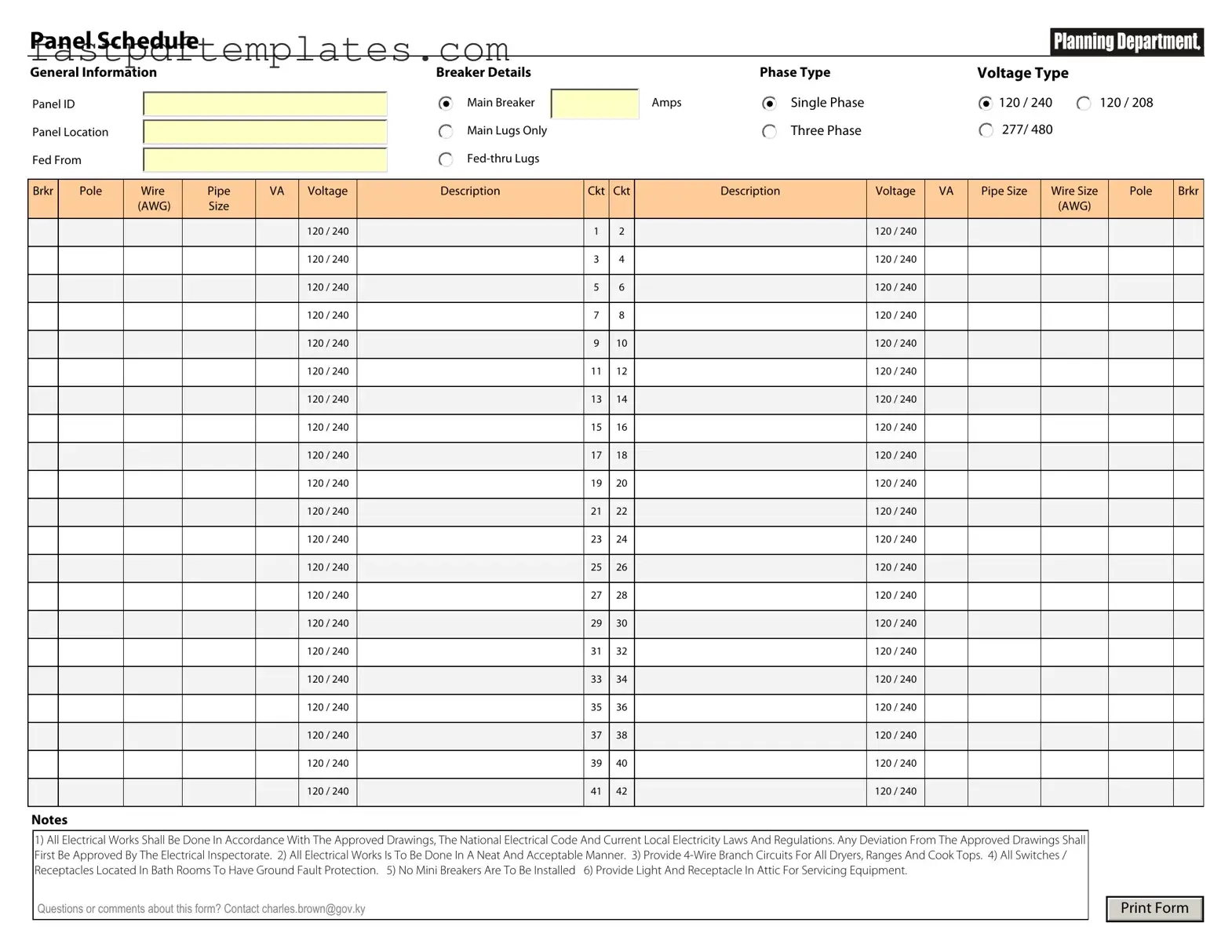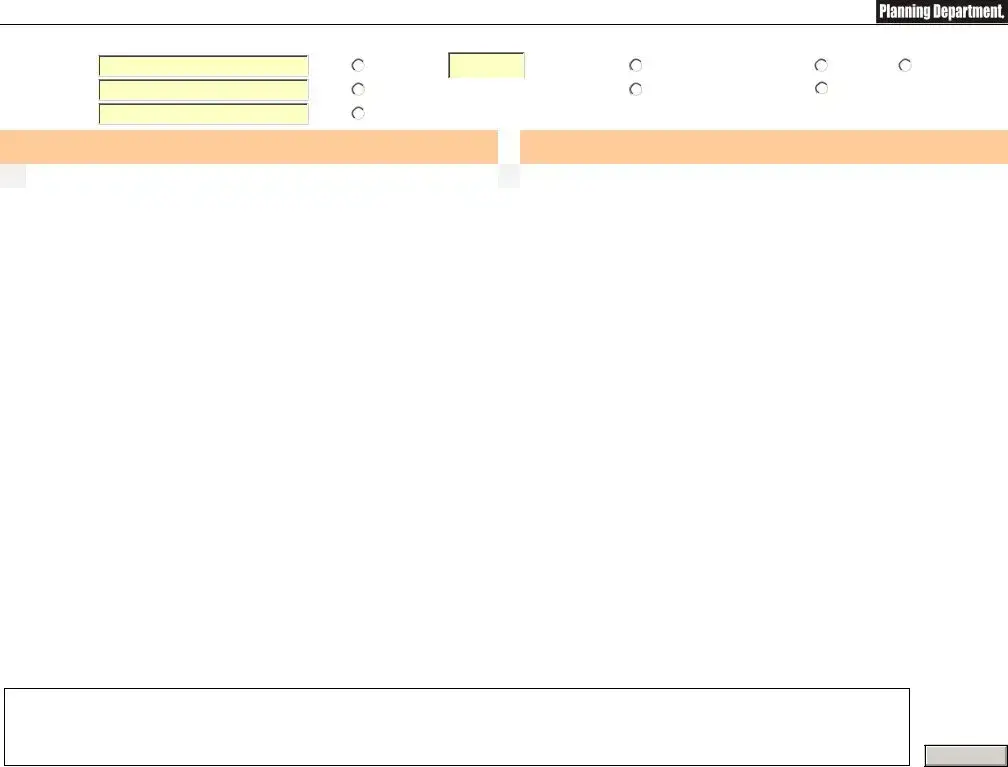The Electrical Load Calculation form is similar to the Electrical Panel Schedule as both documents serve to ensure that electrical systems are designed safely and efficiently. While the Electrical Panel Schedule lists the specific circuits and their loads, the Electrical Load Calculation form provides a comprehensive analysis of the total electrical demand. This helps in determining the appropriate size of the electrical service and panel required for a building.
The Circuit Directory is another related document. It details the specific circuits connected to the electrical panel, including their respective amperage ratings and designated areas. While the Electrical Panel Schedule summarizes the overall panel configuration, the Circuit Directory provides a more granular view, allowing for easy identification of circuit assignments and locations within the building.
The One-Line Diagram is closely related as well. This document visually represents the electrical system's layout, showing how various components are interconnected. It complements the Electrical Panel Schedule by providing a schematic view that aids in understanding the flow of electricity through the system, making it easier to identify potential issues or areas for improvement.
The Load Balancing Report is another important document. It evaluates the distribution of electrical loads across different phases in a panel. Similar to the Electrical Panel Schedule, it aims to prevent overloads and ensure that the electrical system operates within safe limits. This report can help in making adjustments to optimize the performance of the electrical system.
The Service Entrance Schedule is also relevant. This document outlines the specifications for the main service entrance of a building, including the type of service, voltage, and amperage. While the Electrical Panel Schedule focuses on the distribution within the panel, the Service Entrance Schedule provides critical information about how power enters the building, ensuring compatibility and safety.
The Grounding Plan shares similarities as well. This document details the grounding system for the electrical installation, including grounding electrodes and connections. Both the Grounding Plan and the Electrical Panel Schedule are essential for ensuring that the electrical system is safe and compliant with regulations, minimizing the risk of electrical faults.
The Equipment Schedule is another document that complements the Electrical Panel Schedule. It lists all major electrical equipment and their specifications, including transformers, motors, and generators. While the Electrical Panel Schedule organizes circuits, the Equipment Schedule provides a broader view of the electrical system's components, helping to ensure that all equipment is properly accounted for and maintained.
Finally, the Maintenance Log is relevant as it documents the maintenance history of the electrical system. This log can include information on inspections, repairs, and upgrades. Like the Electrical Panel Schedule, the Maintenance Log is essential for ensuring the longevity and safety of the electrical system, allowing for informed decisions regarding future maintenance and upgrades.

